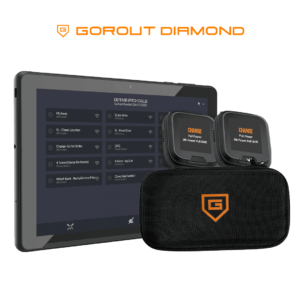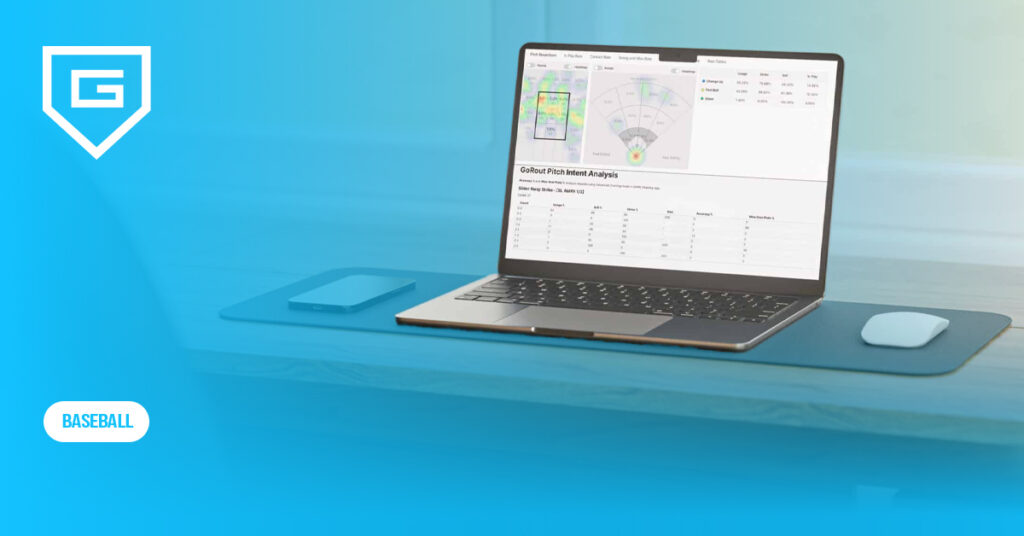Softball Practice Plans: A Comprehensive Guide for Coaches
Reading Time: 10 minutes
Reading Time: 10 minutes
Organizing softball practices can be tricky because you want to help players learn new skills while keeping sessions fun.
A good practice plan helps you make the most of your time on the field and ensures your team keeps getting better as the season progresses.
Well-organized softball practice plans are key for maximizing player development, maintaining energy, and building team cohesion.
In this guide, we’ll show you how to make the best softball practice plans that keep your players involved and having fun.
You’ll learn how to set up your practice sessions, which new drills to include, and tips on tweaking your plans based on your team’s progress.
The Foundation of Effective Softball Practice Plans

Great softball practices don’t happen by accident—they take planning and organization to make sure the team gets the most out of every minute on the field.
Set clear objectives for each practice
Identify 2-3 main goals for each practice, such as improving batting stance, perfecting double plays, or working on communication.
Write down these ideas and share them with your team at the beginning of practice. It creates accountability and gives everyone a shared focus.
Many coaches break down specific drills that target their objectives. For example, if hitting is your focus, include tee work, soft toss, and live batting practice.
Balance skill development with game situations
Useful softball practice plans combine individual skill work with game-like scenarios. Players need both types of training to succeed.
Start with fundamental drills to build technique. Then, move to situations that players will face during games. This approach helps skills transfer to actual competition.
Try some partner drills like soft toss hitting. One person can kneel and toss balls to the side, around 5-7 feet away, for the batter to hit.
Then, split the team into two squads for an inter squad soft toss scrimmage. This takes the partner drill and incorporates game-like scenarios to prepare your players for important situations.
Adapt plans regularly
Match practices with your team’s age and skill level. For younger kids, keep it simple and focus on the basics with shorter activities to keep them interested.
Advanced teams can handle longer, more complex drills and benefit from more game-situation training.
Be flexible with your plans. If you notice the team struggling with a particular skill, be ready to adjust your schedule to address it. The best coaches know when to stick to the plan and when to adapt to help their team win games.
Key Components of Softball Practice Plans
Time management is crucial for successful practices. Most coaches find 60-90 minute sessions work best, with clear goals for each segment.
Your practice plan should include a mix of individual skills and team concepts. Always create plans that flow logically from one activity to the next.
Make sure your practices include station-based training where players rotate through different skill areas. It maximizes repetitions and keeps everyone moving.
Include batting practice with specific situations, like hitting with less than two outs. It builds both technical skills and game awareness.
Incorporate competition into softball drills whenever possible. Players often perform at full speed when competing, which better simulates game conditions.
Use timed segments for different fundamentals:
- Fielding: 15 minutes
- Hitting: 20 minutes
- Base running: 10 minutes
- Team defense: 15 minutes
Make sure players get enough reps to build muscle memory through consistent practice. Concentrate on quality over quantity—precise, well-executed drills are more valuable than doing a lot of them poorly.
Add drills that target your team’s weak spots from recent games to work on the skills that need the most improvement.
Softball Fundamental Drills

Great softball teams don’t just happen—they’re built on strong fundamentals. The goal is to help your players improve while keeping it fun.
Top softball drills recommended by experts
Start with these basics:
- Rapid fire soft-toss: A partner tosses balls quickly for the batter to hit, improving bat speed and reaction time
- Ground ball bucket: Field 10 ground balls in a row without errors
- Four-corner throwing: Players form a square and throw across to build arm strength
These drills help players build confidence while learning proper technique.
Hitting, fielding, and pitching drill progression
Start simple before moving to complex skills.
Hitting:
- Tee work (focus on bat path drill)
- Soft toss
- Live pitching
Fielding:
- Stationary ground balls
- Moving laterally
- Charging and throwing
Pitching:
- Mechanics without ball
- Target practice
- Game situations
Defensive position-specific drills
Infielders must have strong footwork and quick hands. Try the “Double Play Drill”, where players field a grounder and turn two.
Outfielders must track fly balls and strengthen their arms. Competing in the “Crow Hop Relay” is an enjoyable way to hone throwing skills.
Before focusing on power, pitchers should practice their accuracy with targets. Catchers should work on blocking balls in the dirt and framing pitches.
Team defensive and offensive simulations
Run “Situation Scrimmages”, where you call out scenarios like “Runner on second, one out.”
Try the “21 Out Drill” for defense – the team stays fielding until they make 21 outs, encouraging clean fielding and no errors.
Keep drills moving quickly. Players learn best when active and engaged.
Age-Specific Softball Practice Plans
Young athletes have needs that are pretty different from older players, so it’s important to structure practices accordingly for the team to succeed.
8U, 10U & 12U practice drills
Keep the drills simple. For 8U, focus on throwing mechanics and accuracy. Teach the basics of fielding positions, work on hitting fundamentals with some tee drills, and go over simple baserunning rules.
Keep drills brief – 10-15 minutes per activity helps maintain focus. Young players need lots of repetition and positive feedback.
For 10U and 12U, throw in some situational plays and focus on more advanced skills, keeping it fun for everyone.
High school practice structure differences
High school players can handle longer drills, around 15 to 20 minutes, and dive into more intense concepts like defensive situations, advanced hitting techniques, team strategies, and competitive scrimmages.
Adding competitive elements helps mimic game pressure; position-specific training is key at this level.
College-level intensity and specialization
College-level practices take it up another notch with higher intensity and more specialized training.
Players need to be ready for physically tough sessions with a focus on improving their techniques. These practices often include video breakdowns and advanced metrics.
Regularly incorporating advanced hitting drills and defensive strategies is key.
GoRout Diamond: Optimizing Practice Efficiency with Technology

Technology is changing how softball coaches run practices and manage games, and GoRout Diamond offers exciting new ways to improve your team’s performance. It’s made in the USA in partnership with Connect America (Pennsylvania) and KORE Wireless (Georgia).
This innovative electronic pitch-calling system helps you instantly communicate plays and strategies to your players, focusing on execution rather than deciphering signs.
There’s no need to worry about internet access at your field. GoRout uses advanced cellular technology that works everywhere without WiFi or a complicated setup—you can unbox the devices and start practicing immediately. It helps you focus on coaching and game strategy instead of technical issues.

As a coach, you can use the intuitive web app to create offensive and defensive plays. Then, you can send softball pitch calls, defensive shifts, steals, and other critical instructions directly to players’ softball wristbands with a single tap on the on-field coaches app.

Players’ pitch-calling devices have a 4-way privacy screen, vibration alerts for new calls, end-to-end encryption, and adjustable display settings, safeguarding signals from interception.
Your athletes can switch between light and dark modes depending on weather conditions, ensuring they never miss your instructions and increasing game speed. Each electronic pitch-calling wristband is weatherproof, shock-resistant, and operable in extreme temperatures. Batteries last 12 hours on a single charge and can be fully recharged in under one hour.

Beyond communication, GoRout Diamond integrates with AWRE Sports Analytics, offering insights like pitch intent vs. result, AI-driven performance analysis, and real-time pitch charting. It helps you create personalized development plans.
Testimonials and case studies are available for those curious about its impact.
GoRout Diamond is approved for high school and NCAA competitions. It makes it a valuable tool for both practice and game-day situations.
You can start with just one device and add more as needed. Each comes with a complete warranty that covers breakage, giving you peace of mind about your investment.
Get a quote or visit the online shop.
Sample Softball Practice Plans for Different Scenarios
Check out these easy softball practice plans for different situations throughout your season.
Pre-season conditioning focus plans
Kick off with a 90-minute practice that hones in on the basics.
Start with a 15-minute dynamic warm-up—think jogging, stretching, and some other fun activities to boost players’ agility and keep everyone injury-free.
Dedicate 30 minutes to live batting practice where batters practice hitting while fielders work on defensive positioning.
Spend 20 minutes on conditioning drills like sprints and agility ladder work. Players need stamina before diving into technical skills.
Finish with 25 minutes of throwing progressions and fielding basics. This builds arm strength and reinforces proper mechanics.
Mid-season skill refinement plans
For a focused 2-hour softball coaching session, start with the first 30 minutes doing station work, where everyone rotates through different activities like hitting off tees, soft toss, fielding ground balls, and practicing bunting.
Next, spend 45 minutes running through live game situations with a full defense and baserunners. Set up different scenarios—like having one out with a runner on first—and hit balls to various positions.
Wrap up the practice with 20 minutes of team competition drills to boost situational awareness while keeping the energy up.
Tournament preparation plans
Tournament prep requires focus on game-like intensity. Set up specific game situations with baserunners and full defense.
Run a 20-minute rapid-fire defensive drill where players must make quick decisions under pressure.
Practice late-game scenarios for 25 minutes: tie game, last inning situations that your team might face in tournaments.
Include 15 minutes of mental preparation with visualization exercises that help players stay calm in high-pressure moments.
Advanced Softball Practice Organization Techniques

Create the perfect practice blueprint by working backwards from your season goals. Start with what your team needs most, then build your plan around those priorities for quick transitions. Break down each practice into clear segments with specific time limits.
Using station-based practice structures helps you maximize your time with players. Separate your team into small groups that rotate through different skill stations to work on multiple skills simultaneously and give players more repetitions at game speed.
Adding competition elements to practice makes drills more engaging and game-like. Set up batting challenges, fielding contests, or relay races that develop skills while fueling players’ competitive spirit.
Effectively managing assistant coaches and parent volunteers multiplies what you can accomplish. Assign specific responsibilities before practice begins and provide them with written drill instructions.
Develop a system for splitting into appropriate groups based on positions or abilities. It helps players improve faster since they’re working on skills specific to their needs.
Equipment and Resources for Effective Softball Practice
Having the right softball training equipment makes your practices more productive and fun. You need:
- Balls: Practice softballs (12-inch for ages 13+, 11-inch for younger players)
- Bats: Various weights and lengths to accommodate different players
- Protective gear: Helmets, catcher’s equipment, face masks
- Bases: Including home plate and first base
- Training aids: Batting tees, pitching machines, hitting nets
- Field equipment: Cones, stopwatches, measuring tape, chalk for marking the box
- Record-keeping: Clipboards, practice plan templates, player evaluation forms
Technology can improve your traditional practice approach. Tools like video analysis apps help players see their mechanics, while practice tracking systems measure improvement over time.
Not every team has a large budget, but you can still have effective practices. Use tennis balls for indoor drills, plastic cones instead of expensive markers, and homemade hitting tees from PVC pipe.
Setting up efficient practice stations maximizes your time and space. Arrange your field to accommodate multiple position groups simultaneously. For example, infielders can work on grounders while outfielders practice catching fly balls.
Remember that organization is key to productive practices. Storage bins, equipment bags, and a well-thought-out layout help you transition between drills quickly and keep players active rather than waiting.
Measuring Softball Practice Effectiveness
Softball practice plans are just part of the equation. Monitor your progress to make key adjustments and make sure your team improves throughout the season.
Focus on:
- Completion rate of drills and skills
- Error counts in fielding drills
- Contact percentage during batting practice
- Success rate of situational plays
- Player engagement levels
It helps you catch problems early. When you spot weaknesses, you can address them before they become habits or lead to losses.
Don’t forget to monitor player health. Tracking injuries during practice helps identify drills that might be too intense or techniques that need correction.
Ask your players for feedback. Simple questions like “What helped you most today?” or “What still feels confusing?” provide valuable insights you might miss.
Take a look at practice performance compared to game results. If your team practices well but has a tough time in games, you may need to create more game-like pressure in drills.
Conclusion About Softball Practice Plans
Effective softball practice plans are the foundation of team success. A well-orchestrated practice promotes concentration and fundamental development that benefits players throughout the season and beyond.
Remember that your plans can be team-focused or small-group centered. The best coaches mix up their approach with a variety of drills, rotations, and competitions to keep practices engaging.
Keys to success:
- Be prepared and organized before practice starts
- Set clear goals and expectations for each session
- Focus on fundamental skill development
- Include variety to maintain player interest
GoRout Diamond is the go-to solution for making your practice sessions more efficient. With real-time communication, strong analytics, and super reliable performance, you can coach your team smarter, execute faster, and outplay the competition.
Ready to upgrade your softball practices? Get a quote today and see how technology can boost your coaching experience.
FAQs About Softball Practice Plans
What is the 3 2 1 drill in softball?
The 3 2 1 drill in softball splits the team into two groups: offense and defense.
Three balls are set 5–7 feet apart from third base toward home plate. The first defensive player, starting on third base, sprints to retrieve each ball and throws it to a teammate at second base.
Meanwhile, an offensive player runs from home plate toward first and second base. The goal is for the defense to complete all throws before the offensive runner reaches second.
What are the top 3 hardest positions in softball?
The three most challenging positions in softball are typically catcher, shortstop, and pitcher.
Catchers need exceptional game awareness, quick reactions, and physical endurance. Shortstops require elite fielding skills and arm strength.
Pitchers face intense pressure and need consistent technique.
Each position demands unique skills that you should address in your practice planning.
How long should softball practice be?
Effective softball practices typically last 1.5 to 2 hours. Youth teams might practice for 60-90 minutes, while high school and college teams might go longer.
Quality matters more than quantity. Well-organized practice plans with station-based drills help you maximize time without exhausting players.
Include water breaks and various activities to maintain focus.
What drills to run at a softball tryout?
For softball tryouts, include the following:
- Fielding: Ground balls, pop flies, and throwing accuracy tests
- Hitting: Batting practice, bunting, and tee work
- Base running: Timed sprints between bases
- Position-specific: Catching drills and pitching evaluation
Use station-based practice formats to evaluate multiple skills efficiently. It helps you assess each player’s abilities while keeping everyone active and engaged.







